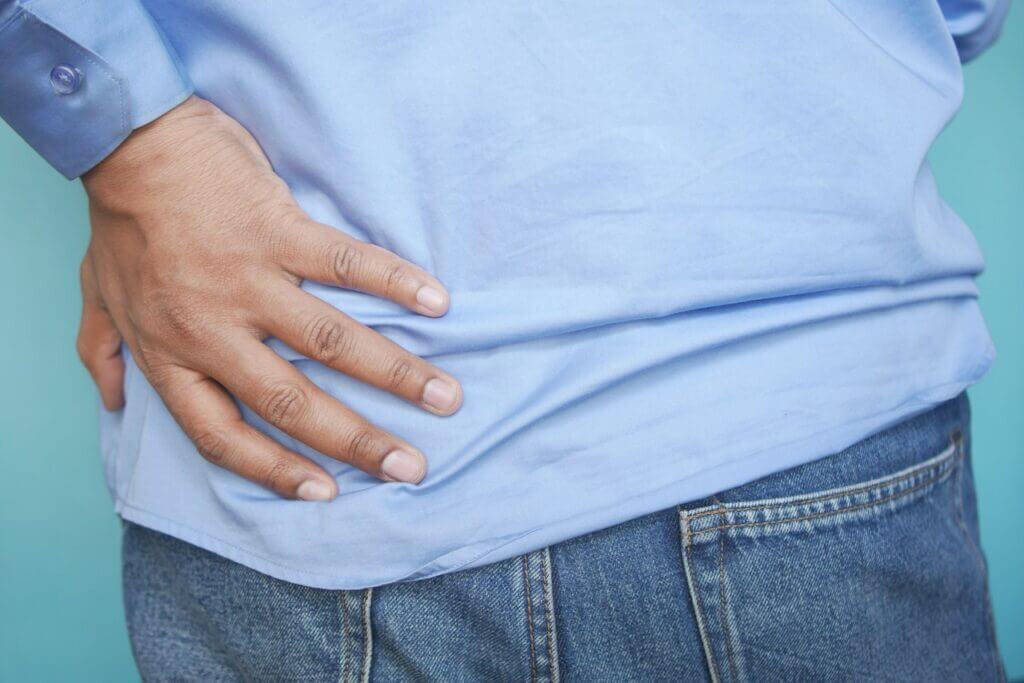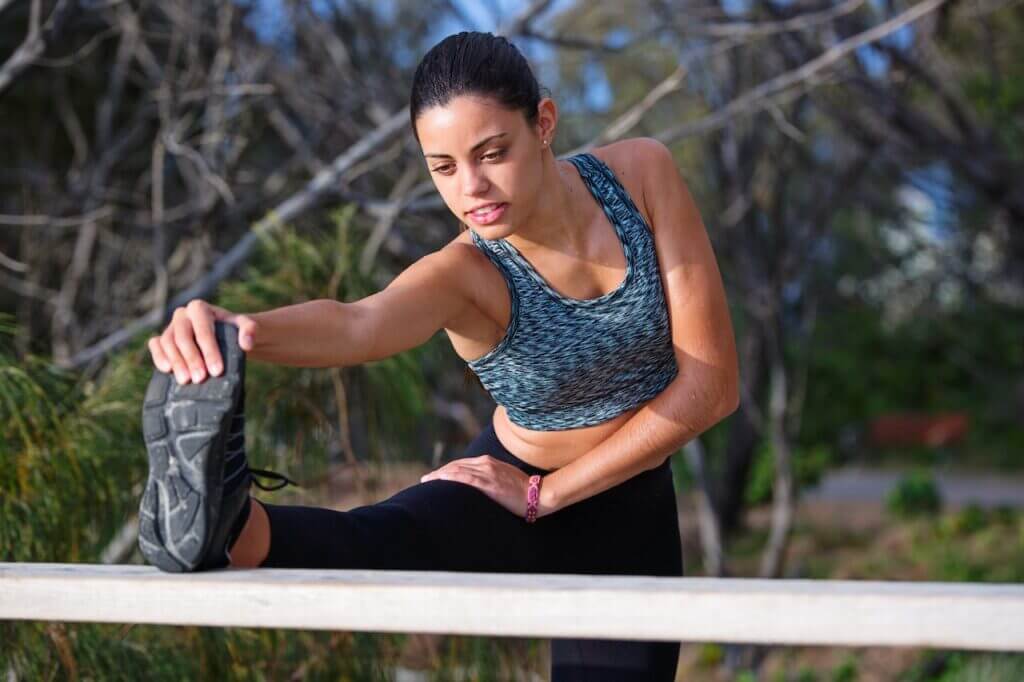Are you an avid runner who loves hitting the pavement or trails, but recently found yourself experiencing hip pain after your runs?
You’re not alone. Hip pain after running is a common concern among athletes and fitness enthusiasts, and it’s crucial to address it to ensure your running journey remains enjoyable and injury-free. In this comprehensive blog post, we’ll delve into the causes, symptoms, and effective remedies for hip pain after running.
Whether you’re a seasoned marathoner or a beginner jogger, understanding and managing hip pain will help you stay on track toward your fitness goals. So, let’s lace up our running shoes and explore how to overcome those nagging hip discomforts, allowing you to stride pain-free and maximize your running potential.
Table of Contents
What are the common causes of hip pain in runners?

Hip pain after running can be attributed to three main factors: muscle imbalances and weaknesses, overuse injuries, and impact-related injuries. By understanding these causes, we can better address and find effective solutions for hip pain. Let’s explore the reasons behind hip pain in runners.
1. Muscle Imbalances and Weaknesses
When it comes to running, our hips play a crucial role in providing stability, power, and balance. However, muscle imbalances and weaknesses can disrupt this delicate harmony, leading to hip pain. Picture your hips as a powerful engine; if certain muscles are weak or imbalanced, it’s like having a misfiring cylinder.
One common culprit is the gluteus medius, a key hip stabilizer. When it’s weak or underutilized, other muscles compensate, causing strain and pain. The hip flexors, including the psoas and iliacus, can also become tight and imbalanced, negatively affecting hip mechanics.
2. Overuse Injuries
Running is undoubtedly a high-impact activity that subjects our bodies to repetitive stress. Over time, this can result in overuse injuries, including those affecting the hip joint. Common overuse injuries that cause hip pain in runners include iliotibial (IT) band syndrome, trochanteric bursitis, and stress fractures.
IT band syndrome occurs when the iliotibial band—a fibrous tissue that runs along the outside of the thigh—becomes tight and irritated, causing pain in the hip and knee. Trochanteric bursitis, on the other hand, is the inflammation of the fluid-filled sacs that cushion the bony prominence of the hip joint. Stress fractures, although less common, can also occur in the hip area due to repetitive stress on the bones.
3. Impact-Related Injuries
As runners, we are constantly exposed to the forces generated by each foot strike. While our bodies have ingenious shock-absorbing mechanisms, sometimes these mechanisms can be overwhelmed, leading to hip pain. Impact-related injuries are often the result of excessive forces or sudden trauma to the hip joint.
Hip impingement, also known as femoroacetabular impingement (FAI), occurs when there is abnormal contact between the hip bones, leading to friction and damage. This can be caused by factors such as structural abnormalities, repetitive motions, or sudden movements. Additionally, falls or collisions during running can result in hip contusions or dislocations, causing immediate pain and potential long-term complications.
Understanding these common causes of hip pain in runners can help us take proactive steps to prevent and address them. By focusing on muscle balance, monitoring training volume, and protecting ourselves from impact-related injuries, we can keep our hips happy and our running game strong. So let’s dive into the symptoms and effective remedies for hip pain after running to get you back on track!
Read: Why Do My Ribs Hurt After Running?
Risk Factors for Developing Hip Pain
While running is a fantastic way to stay fit and enjoy the great outdoors, it’s essential to be aware of the potential risk factors that can contribute to hip pain. By understanding these risk factors, you can take proactive measures to prevent or address hip pain before it becomes a persistent issue. Let’s dive into some common risk factors associated with developing hip pain after running.
1. Improper Running Form

Your running form plays a crucial role in minimizing stress on your joints, including the hips. Running with improper form can place excessive strain on the hip joint and surrounding muscles, leading to discomfort and pain.
For instance, overstriding (landing with your foot too far in front of your body) can increase the impact on your hips. Additionally, inadequate hip stabilization or excessive hip rotation during running can also contribute to hip pain.
By working on your running form, such as maintaining an upright posture, engaging your core, and aiming for a midfoot strike, you can reduce the risk of hip pain and enhance your overall running experience.
2. Inadequate Warm-up and Cool-down Routines
Neglecting a proper warm-up and cool-down routine is a common mistake made by many runners. Warm-up exercises help prepare your muscles, joints, and connective tissues for the upcoming physical activity.
By gradually increasing your heart rate and circulation, a warm-up primes your body for optimal performance and reduces the risk of injuries. Similarly, cooling down after running with gentle stretches and mobility exercises helps your body transition to a resting state, preventing muscle stiffness and promoting recovery.
Failing to incorporate these essential components into your running routine may increase the likelihood of experiencing hip pain.
3. Insufficient Rest and Recovery Periods
Your body needs time to recover and repair itself after intense physical activity, such as running. Insufficient rest and recovery periods can lead to cumulative stress on your muscles and joints, including your hips, making them more prone to injury and pain. Overtraining, which involves pushing your body beyond its limits without allowing ample recovery time, can be a significant factor in developing hip pain.
It’s crucial to listen to your body’s signals and incorporate rest days into your training schedule. Additionally, incorporating cross-training activities that engage different muscle groups can help reduce the strain on your hips and promote overall fitness and resilience.
By being mindful of these risk factors, you can take proactive steps to reduce the chances of hip pain after running. Focus on maintaining proper running form, incorporating a thorough warm-up and cool-down routine, and allowing yourself adequate rest and recovery periods.
Remember, a balanced approach to running will not only enhance your performance but also keep your hips happy and pain-free for many miles to come.
Identifying Symptoms of Hip Pain

Learn to recognize the symptoms of hip pain after running and differentiate them from other conditions. By understanding the signs and symptoms, you can take the necessary steps to address and alleviate hip discomfort effectively.
A. Common signs and symptoms
Hip pain after running can manifest in various ways. It’s essential to pay attention to the following signs and symptoms to identify if you’re experiencing hip pain:
Sharp or Dull Pain in the Hip Region
When hip pain occurs after running, it may be felt as a sharp, stabbing sensation or a dull ache in the hip joint. This pain can range from mild discomfort to severe, making it difficult to continue running or even perform daily activities.
Limited Range of Motion
Hip pain can restrict your ability to move freely. You may notice a decrease in your hip’s range of motion, making it challenging to perform simple movements like bending, squatting, or lifting your leg.
Difficulty Walking or Bearing Weight
If hip pain intensifies when you walk or put weight on the affected leg, it’s a clear indication that something is amiss. You may experience a limp or favor one leg to minimize the pain while walking.
Swelling or Inflammation
Inflammation and swelling are common companions of hip pain. The affected area may appear swollen, tender, or warm to the touch. These signs suggest an inflammatory response in the hip joint.
B. Differentiating Hip Pain from Other Conditions
Hip pain can sometimes be confused with other conditions that affect the hip region. Here are a few conditions to consider when differentiating hip pain:
Hip Bursitis
Hip bursitis is the inflammation of the bursae, small fluid-filled sacs that cushion the hip joint. It can cause pain and tenderness on the outside of the hip and may be aggravated by prolonged sitting or physical activity.
Labral Tears
Labral tears occur when the cartilage lining the hip joint, known as the labrum, gets damaged. This can cause pain, clicking or locking sensations, and a feeling of instability in the hip. Labral tears often result from repetitive motions or traumatic injuries.
Hip Flexor Strain
The hip flexor muscles, located at the front of the hip, can become strained from overuse or sudden movements. Hip flexor strain may cause pain in the front of the hip or groin area and can be aggravated by activities that involve hip flexion, such as running or kicking.
Osteoarthritis
Osteoarthritis is a degenerative joint disease that commonly affects older individuals but can also occur due to previous injuries or overuse. It leads to the breakdown of cartilage in the hip joint, resulting in pain, stiffness, and limited mobility.
It’s important to consult with a healthcare professional to accurately diagnose the underlying cause of your hip pain. They can conduct a thorough examination, review your medical history, and order any necessary imaging tests to provide an accurate diagnosis and appropriate treatment plan.
Effective Remedies for Hip Pain

When it comes to addressing hip pain after running, several effective remedies can provide relief and promote healing. By incorporating these strategies into your routine, you can regain your comfort and get back to enjoying your runs. Let’s explore these remedies in detail:
A. Rest and Recovery
One of the simplest yet crucial remedies for hip pain is allowing your body to rest and recover. Overuse and repetitive stress on the hip joint can lead to pain and inflammation. Taking a break from running and engaging in low-impact activities, such as swimming or cycling, gives your hip a chance to heal and reduces the strain on the joint.
B. Ice and Heat Therapy
Applying ice or heat to the affected area can help alleviate pain and reduce inflammation. Ice therapy is effective during the initial stages when there is acute pain or swelling. Applying a cold pack for 15-20 minutes several times a day can provide relief. Heat therapy, on the other hand, can be beneficial for chronic hip pain by improving blood flow and relaxing muscles. Use a heating pad or take warm baths to soothe the discomfort.
C. Stretching and Strengthening Exercises
Stretching and strengthening exercises are vital for improving hip flexibility, stability, and muscle balance. Here are some specific exercises to target different areas:
Hip Flexor Stretches
Tight hip flexor muscles can contribute to hip pain. Perform exercises like the kneeling hip flexor stretch or the standing quad stretch to stretch and lengthen these muscles.
Glute Strengthening Exercises
Strong glute muscles provide stability and support to the hip joint. Incorporate exercises such as bridges, clamshells, and squats to strengthen your glutes and reduce strain on the hip.
IT Band Stretches
The iliotibial (IT) band runs along the outer side of the hip and can contribute to hip pain if it becomes tight or inflamed. Foam rolling and IT band stretches, such as the standing IT band stretch, can help release tension and improve mobility.
D. Modifications to Running Routine:
Making modifications to your running routine can prevent further hip pain and promote healing. Consider the following adjustments:
Gradual Increase in Mileage and Intensity
Avoid sudden increases in mileage or intensity, as it can put excessive strain on your hips. Gradually increase your running volume to allow your body to adapt and avoid overuse injuries.
Proper Footwear and Running Surfaces
Ensure you have well-fitting running shoes with proper support and cushioning. Additionally, vary your running surfaces to reduce the impact on your hips. Opt for softer surfaces like grass or trails whenever possible.
E. Seeking Professional Help
If your hip pain persists or worsens, it’s advisable to seek professional help. Consider the following options:
Physical Therapy
A physical therapist can assess your condition, provide targeted exercises, and guide you through a rehabilitation program to address the underlying causes of your hip pain.
Chiropractic Care
Chiropractors can help identify misalignments or imbalances in your spine and hips. Through adjustments and manipulations, they can restore proper alignment and alleviate pain.
Massage Therapy
Massage therapy can help reduce muscle tension, improve circulation, and promote relaxation. A skilled massage therapist can target specific hip muscles to relieve pain and enhance recovery.
Medical Evaluation and Treatment Options
In some cases, hip pain may require medical evaluation and treatment. Consulting with a healthcare professional, such as an orthopedic specialist, can help determine if additional interventions like injections, medications, or surgery are necessary.
By incorporating these effective remedies and seeking appropriate professional help when needed, you can effectively manage and alleviate hip pain after running, allowing you to enjoy your favorite activity
Preventive Measures for Future Hip Pain
To ensure a pain-free and enjoyable running experience, it’s essential to implement preventive measures that promote hip health. By incorporating the following strategies into your routine, you can significantly reduce the risk of developing hip pain after running and maintain optimal performance.
A. Proper warm-up and cool-down routines
Imagine starting a car on a cold winter morning without giving it time to warm up. Just like your vehicle, your body needs a proper warm-up before you hit the pavement. A dynamic warm-up routine, consisting of movements that engage your hip joints and surrounding muscles, helps prepare them for the demands of running.
Consider incorporating exercises such as leg swings, lunges, and hip circles into your warm-up. These movements increase blood flow, loosen up tight muscles, and improve flexibility, reducing the strain on your hips during your run.
Similarly, cool-down routines are equally important for preventing post-run hip pain. After completing your run, perform static stretches that target the hip flexors, glutes, and hamstrings. Cooling down allows your body to gradually return to its resting state, reducing the risk of muscle tightness and discomfort.
B. Cross-training and strength training
Running is a fantastic cardiovascular activity, but focusing solely on this repetitive motion can lead to muscle imbalances and overuse injuries. To mitigate these risks, incorporate cross-training and strength-training exercises into your routine.
Engaging in activities such as swimming, cycling, or yoga on non-running days helps promote balanced muscle development and alleviates strain on your hips. Cross-training also provides a break from the repetitive impact of running, allowing your joints to recover and reducing the risk of overuse injuries.
Strength training, particularly exercises that target the hips, can be a game-changer in preventing hip pain. Include exercises like squats, lunges, hip thrusts, and lateral leg raises to strengthen the muscles supporting your hip joint. Stronger muscles enhance stability, improve your running form, and reduce stress on your hips.
C. Listening to your body and avoiding overtraining
Your body is incredibly intelligent and communicates with you through various signals. To prevent hip pain, it’s crucial to listen and respond to these signals. Pushing through excessive fatigue, pain, or discomfort can lead to injuries that may sideline you from running altogether.
Pay attention to any warning signs, such as persistent pain or soreness in your hips, and take appropriate rest days when needed. Incorporate active recovery activities like gentle walks or low-impact exercises on rest days to maintain mobility and blood flow without overtaxing your hips.
D. Regular rest and recovery periods
Rest and recovery are vital components of any training program. During these periods, your body repairs and strengthens itself, reducing the risk of hip pain and injuries. Aim for at least one or two rest days per week, allowing your hips and the rest of your body to recover from the impact of running.
Additionally, consider incorporating active recovery techniques such as foam rolling, massage, or yoga to help release muscle tension and promote circulation. These activities can improve flexibility, reduce muscle soreness, and enhance your overall hip health.
E. Correcting running form and technique
Running with improper form and technique places undue stress on your hips and increases the likelihood of developing pain. Therefore, it’s essential to focus on proper running mechanics.
Maintain an upright posture, engage your core, and avoid excessive leaning forward or backward. Aim for a midfoot strike and ensure your feet land directly beneath your body, reducing the impact on your hips. Shortening your stride and increasing your cadence can also help reduce stress on your hip joints.
If you’re unsure about your running form, consider consulting a running coach or physical therapist who can analyze your technique and provide guidance for improvement.
F. Maintaining a healthy weight
Maintaining a healthy weight is not only important for overall well-being but also plays a significant role in preventing hip pain during and after running. Carrying excess weight puts additional stress on your joints, including the hips, increasing the risk of pain and injuries.
Adopting a balanced and nutritious diet that supports your energy needs and promotes weight management is crucial. Focus on consuming whole foods, including lean proteins, fruits, vegetables, whole grains, and healthy fats. Avoid excessive intake of processed foods, sugary snacks, and beverages, as they can contribute to weight gain and inflammation.
Incorporating regular physical activity beyond running, such as aerobic exercises or strength training, can help maintain a healthy weight and further support your hip health. Engaging in activities that you enjoy and that complement your running routine will contribute to overall fitness and reduce the strain on your hips.
Remember, making sustainable lifestyle changes is key to achieving and maintaining a healthy weight. Aim for gradual progress rather than quick fixes, and consult a healthcare professional or registered dietitian for personalized guidance if needed.
By implementing these preventive measures, you can significantly reduce the likelihood of experiencing hip pain after running. Taking care of your hips through proper warm-up and cool-down routines, cross-training, strength training, listening to your body, allowing for adequate rest and recovery, correcting running form, and maintaining a healthy weight will promote long-term hip health, enabling you to enjoy your running journey to the fullest.
FAQ
How do I relieve hip pain from running?
To relieve hip pain from running, you can try the following:
1. Rest and reduce activity.
2. Apply ice or heat to the affected area.
3. Perform gentle stretching and strengthening exercises for the hip muscles.
4. Use a foam roller for self-massage.
5. Consider using over-the-counter anti-inflammatory medication.
6. Ensure proper footwear and consider modifying running surfaces.
7. Seek physical therapy for evaluation and targeted treatment.
8. Follow the RICE method: Rest, Ice, Compression, and Elevation.
If the pain persists or worsens, consult a healthcare professional for further evaluation and guidance.
Is it normal for hips to hurt after running?
Yes, it is normal for some individuals to experience hip pain after running due to the high-impact nature of the activity. However, persistent or severe hip pain should not be considered normal and may indicate an underlying issue. If you consistently experience hip pain after running, it is advisable to consult with a healthcare professional for evaluation and appropriate guidance.
Why does my hip hurt after running and walking?
Hip pain after running and walking can be caused by factors such as muscle imbalances, overuse injuries, IT band syndrome, hip impingement, incorrect footwear or technique, and underlying hip joint conditions. Consulting with a healthcare professional is recommended for an accurate diagnosis and appropriate treatment.
Conclusion
Hip pain after running can be disruptive and discouraging, but there are ways to prevent it and promote hip health. Understanding the causes, identifying symptoms, and applying effective remedies can help address existing hip pain.
To avoid future hip pain, prioritize proper warm-up and cool-down routines, cross-training, and strength training. Listen to your body, allow for rest and recovery, correct running form, and maintain a healthy weight. These preventive measures can significantly reduce the risk of hip pain and injuries.
Remember to consult healthcare professionals for personalized guidance if needed. By taking proactive steps to care for your hips, you can enjoy pain-free running and sustain your long-term running journey. Keep your hips strong, pain-free, and ready for every running challenge that comes your way!


